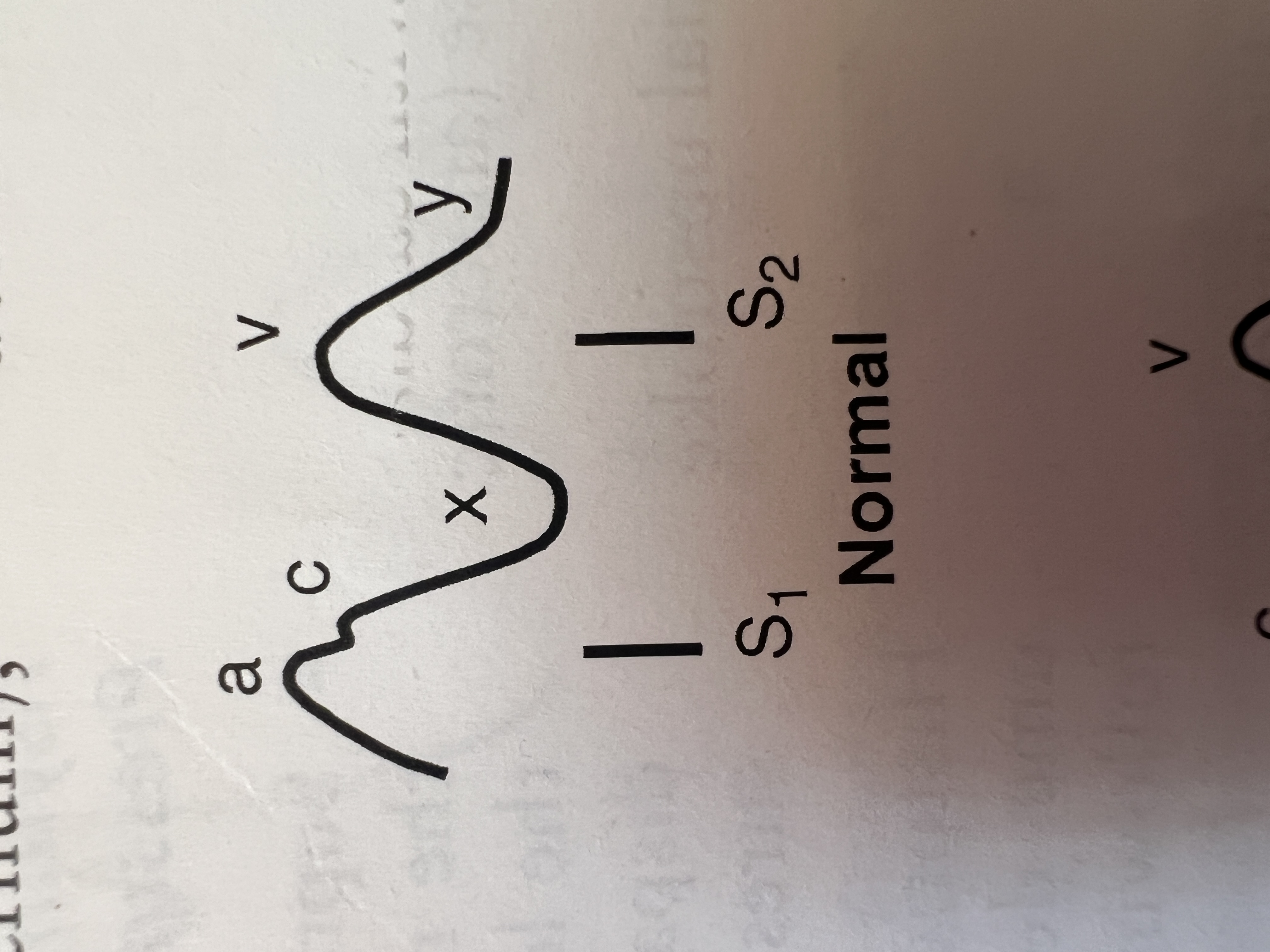IJ pulsations terminology
1/7
Earn XP
Description and Tags
Flashcards based on lecture notes about heart pressure waves and atrial fibrillation.
Name | Mastery | Learn | Test | Matching | Spaced |
|---|
No study sessions yet.
8 Terms
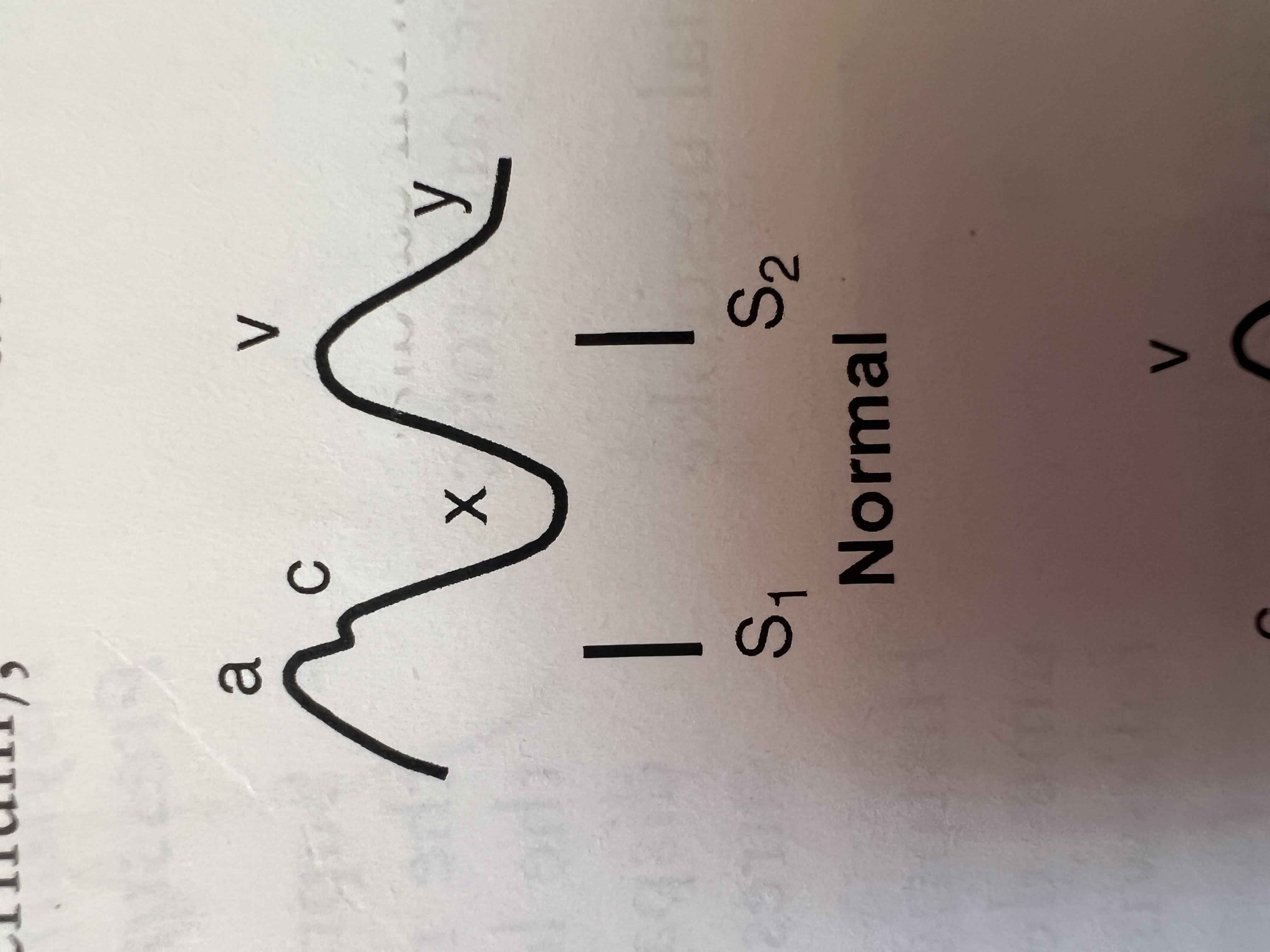
What causes the 'a' wave in right atrial pressure?
Rise in right atrial pressure during atrial contraction.
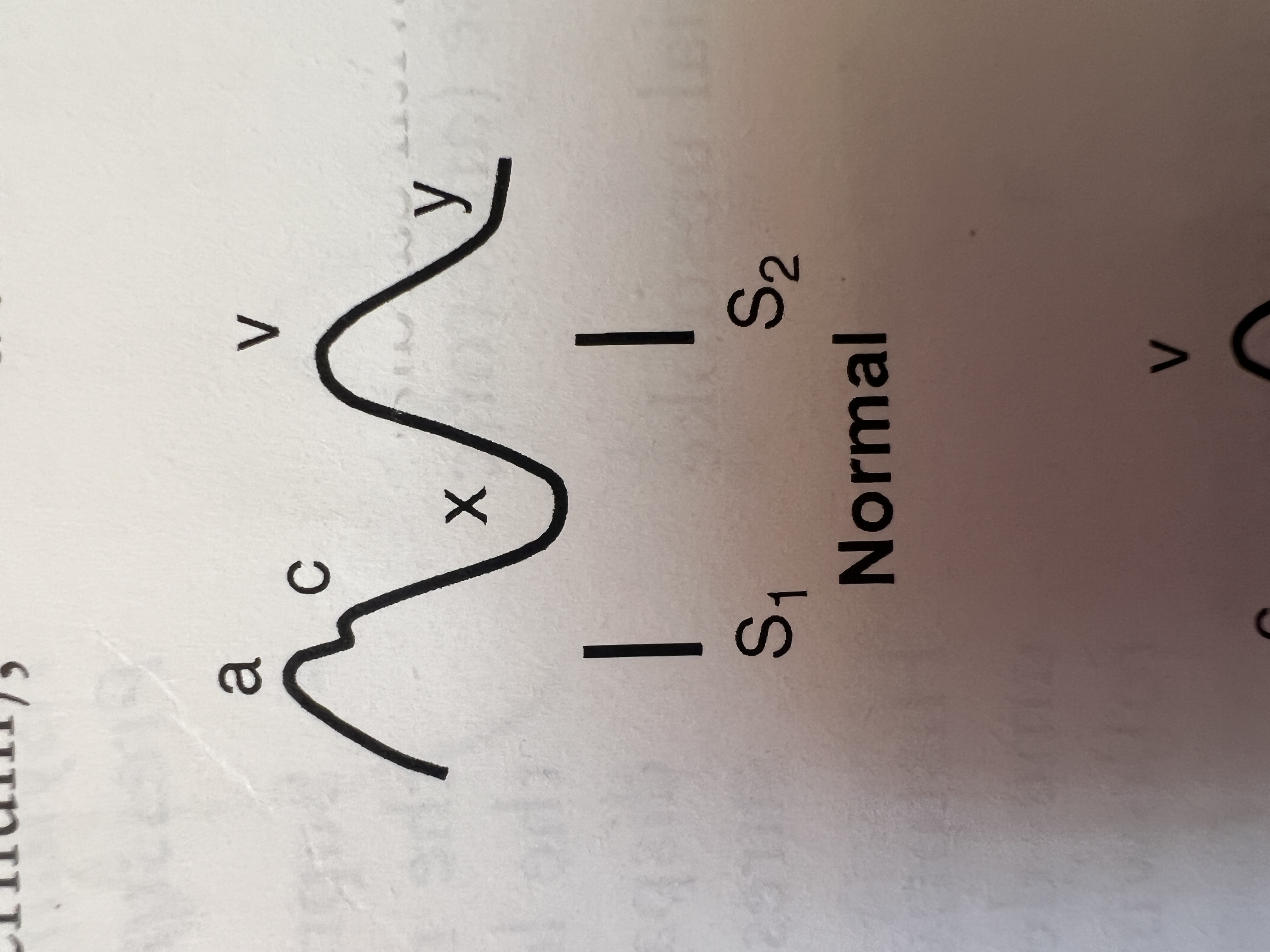
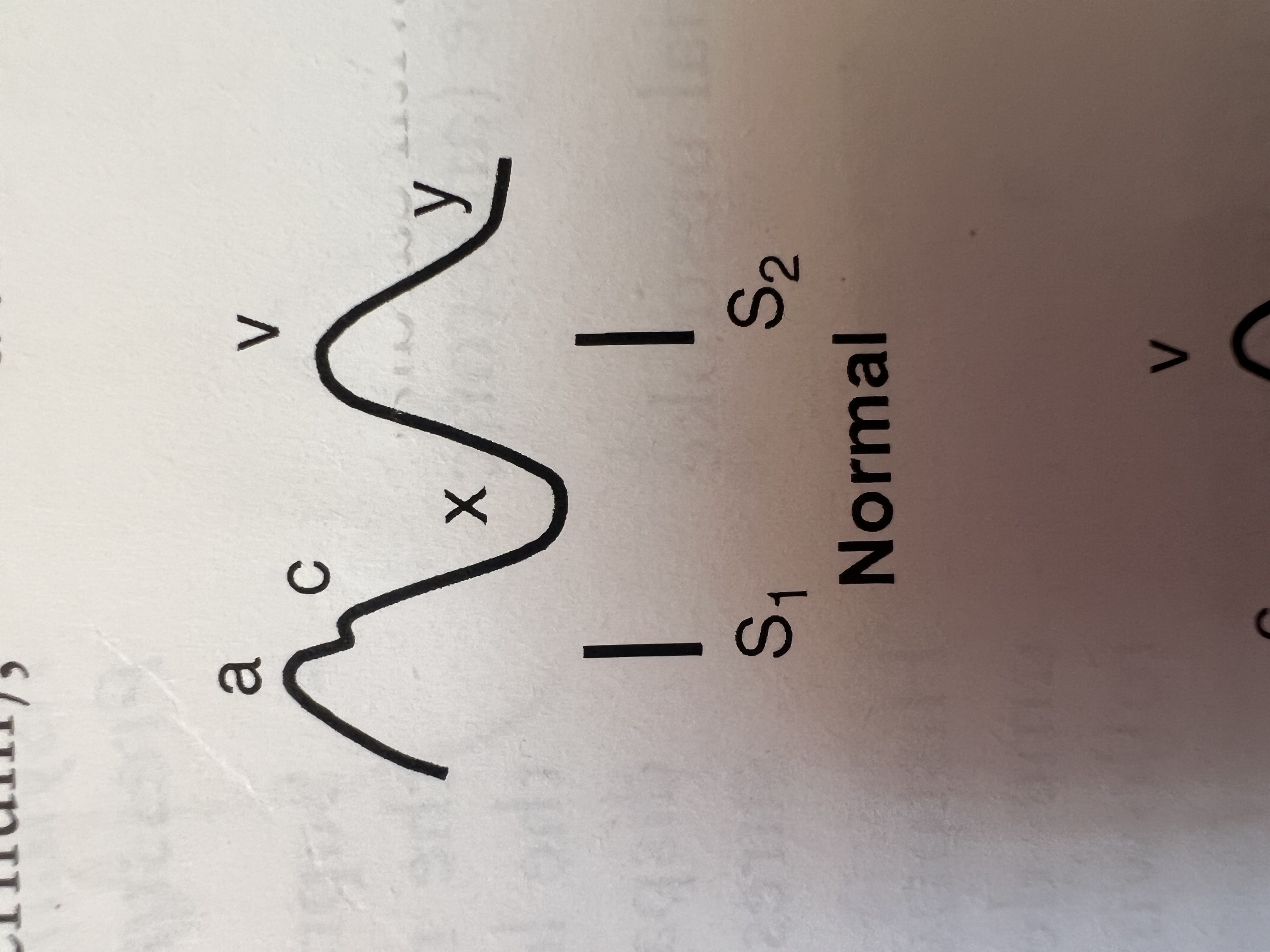
What causes the 'c' wave in right atrial pressure?
Rise in right atrial pressure during upward motion of the tricuspid valve/annulus during right ventricular systole.
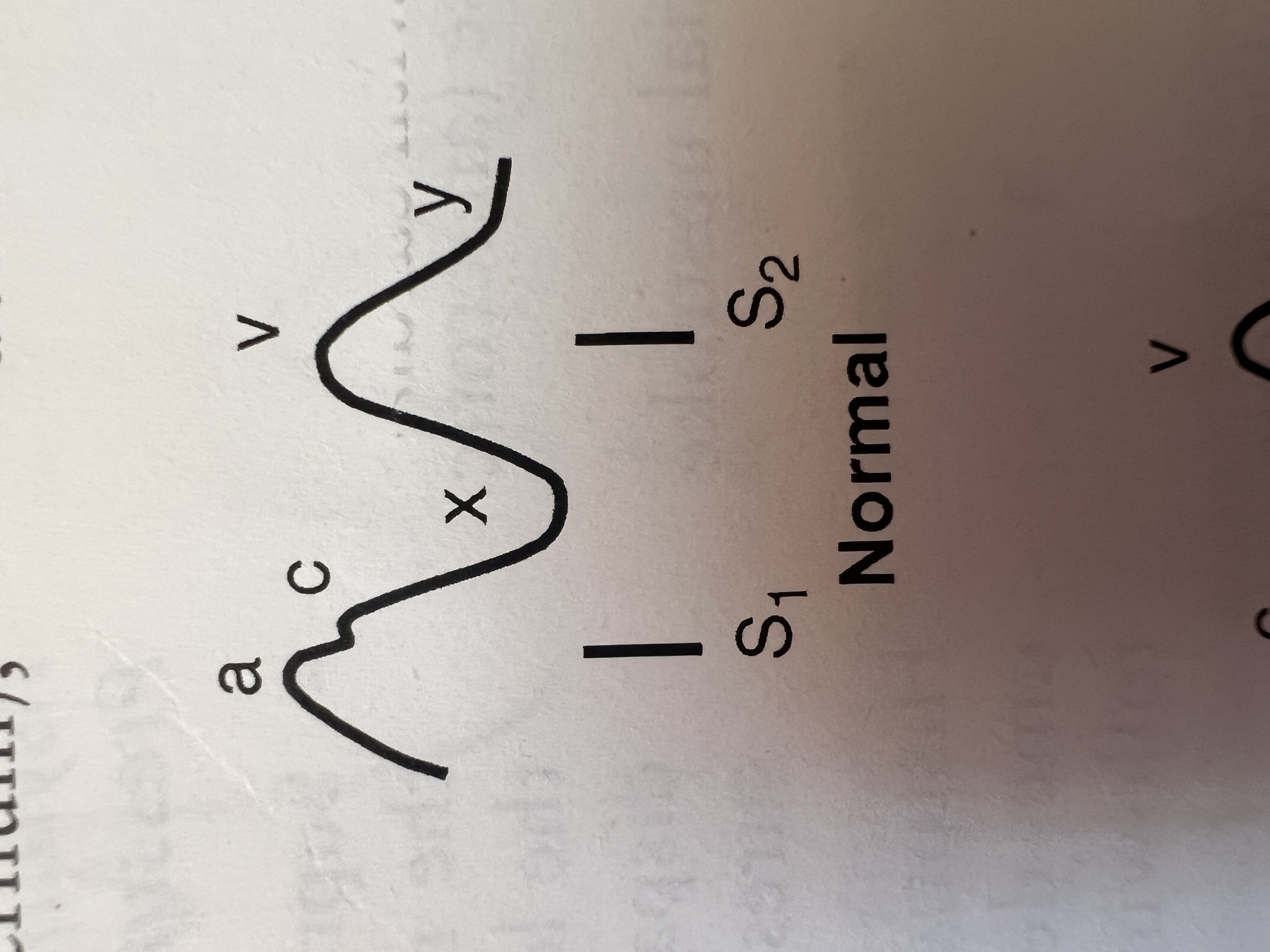
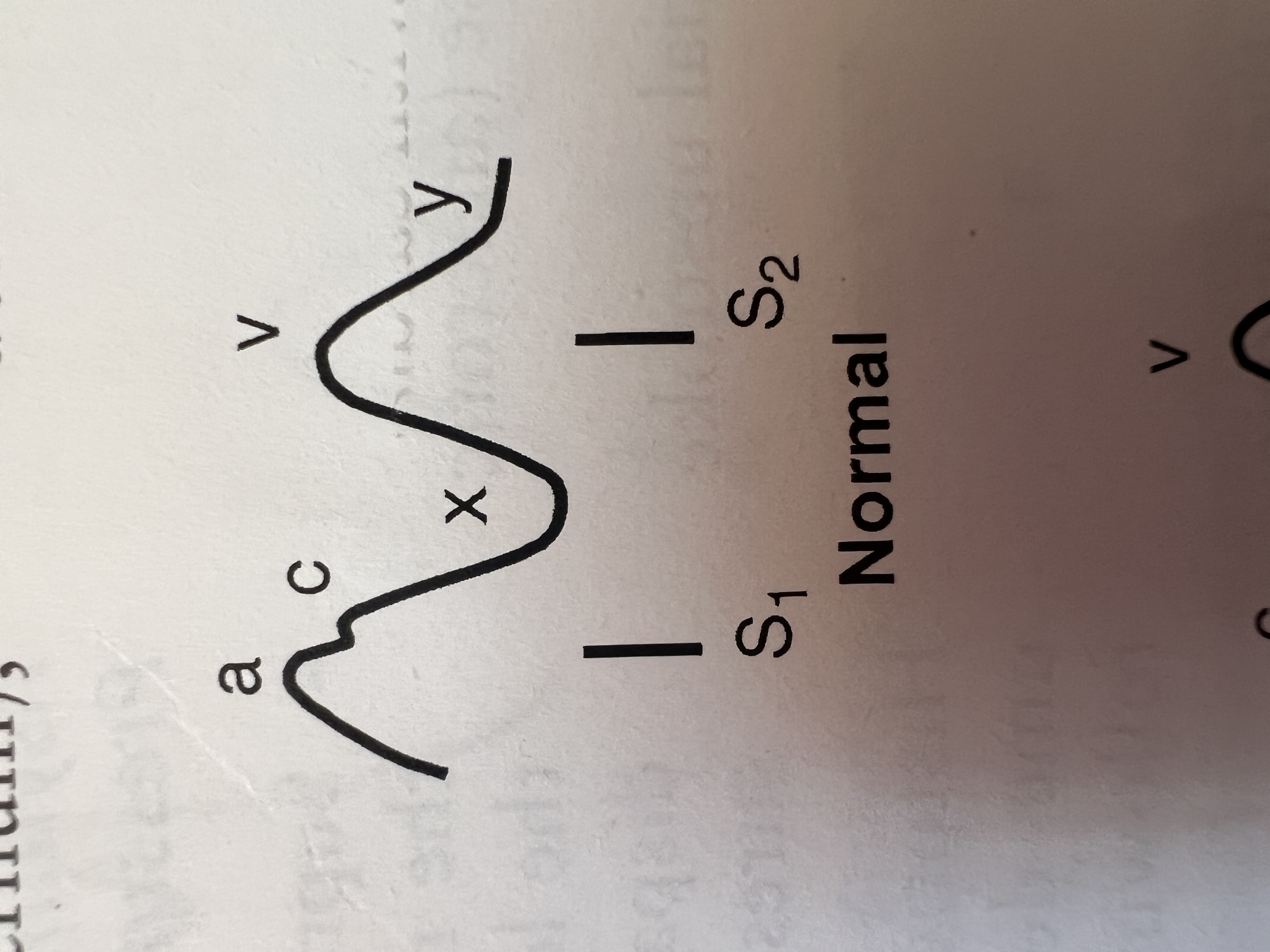
What causes the 'x' descent in right atrial pressure?
Decrease in right atrial pressure with right atrial/annular relaxation during right ventricular systole.
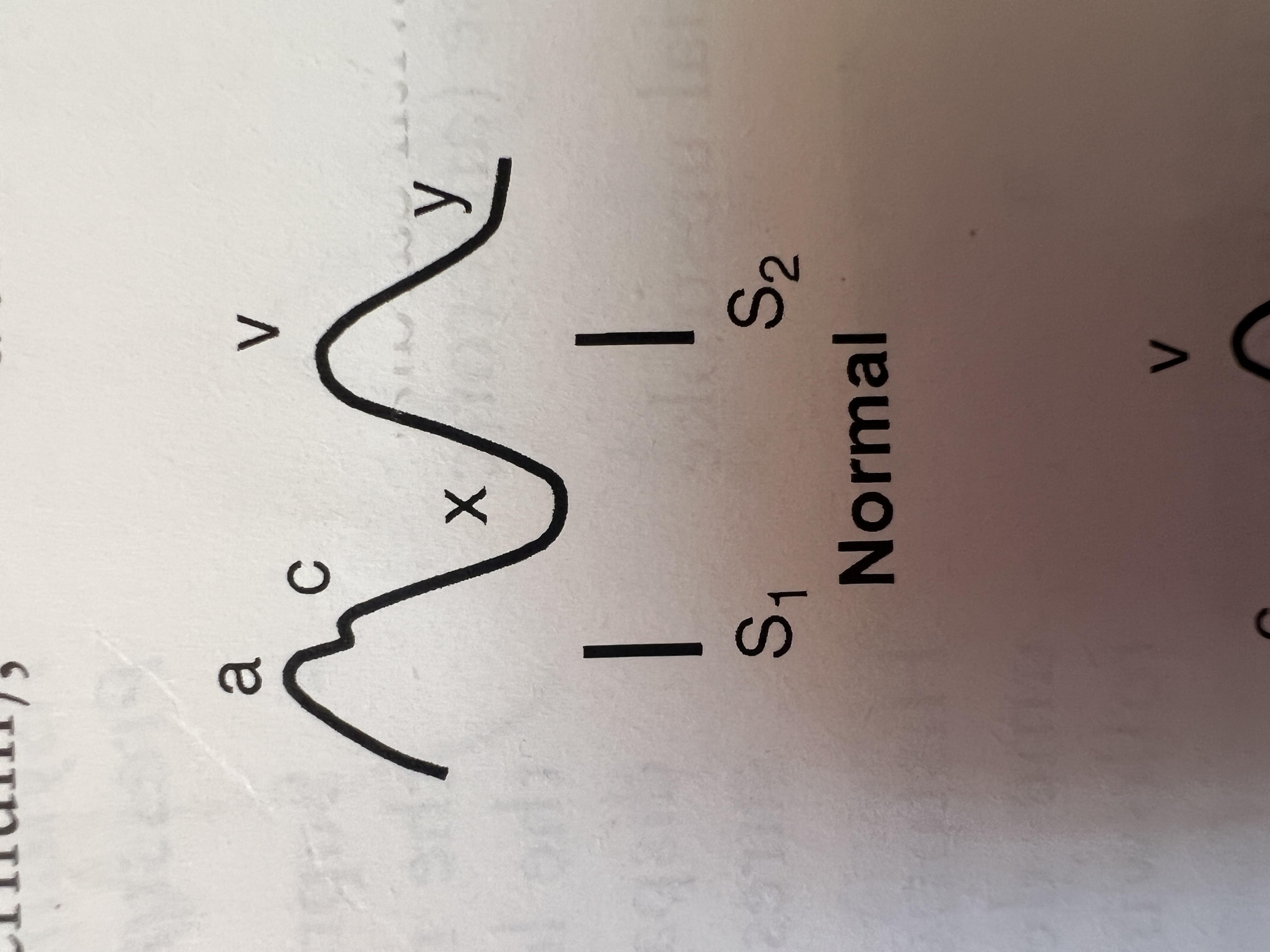
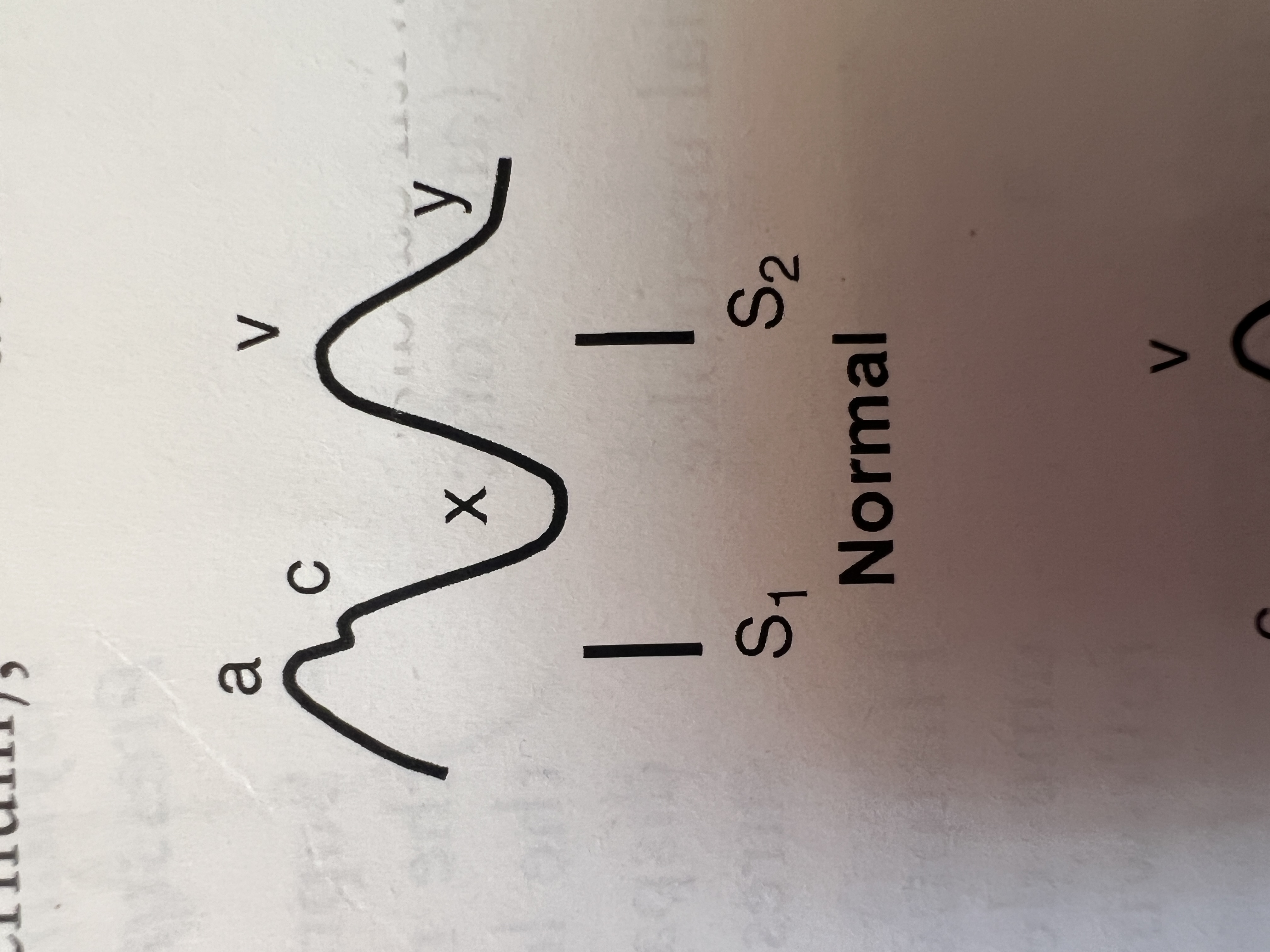
What causes the 'v' wave in right atrial pressure?
Rise in right atrial pressure during passive filling during right ventricular systole.
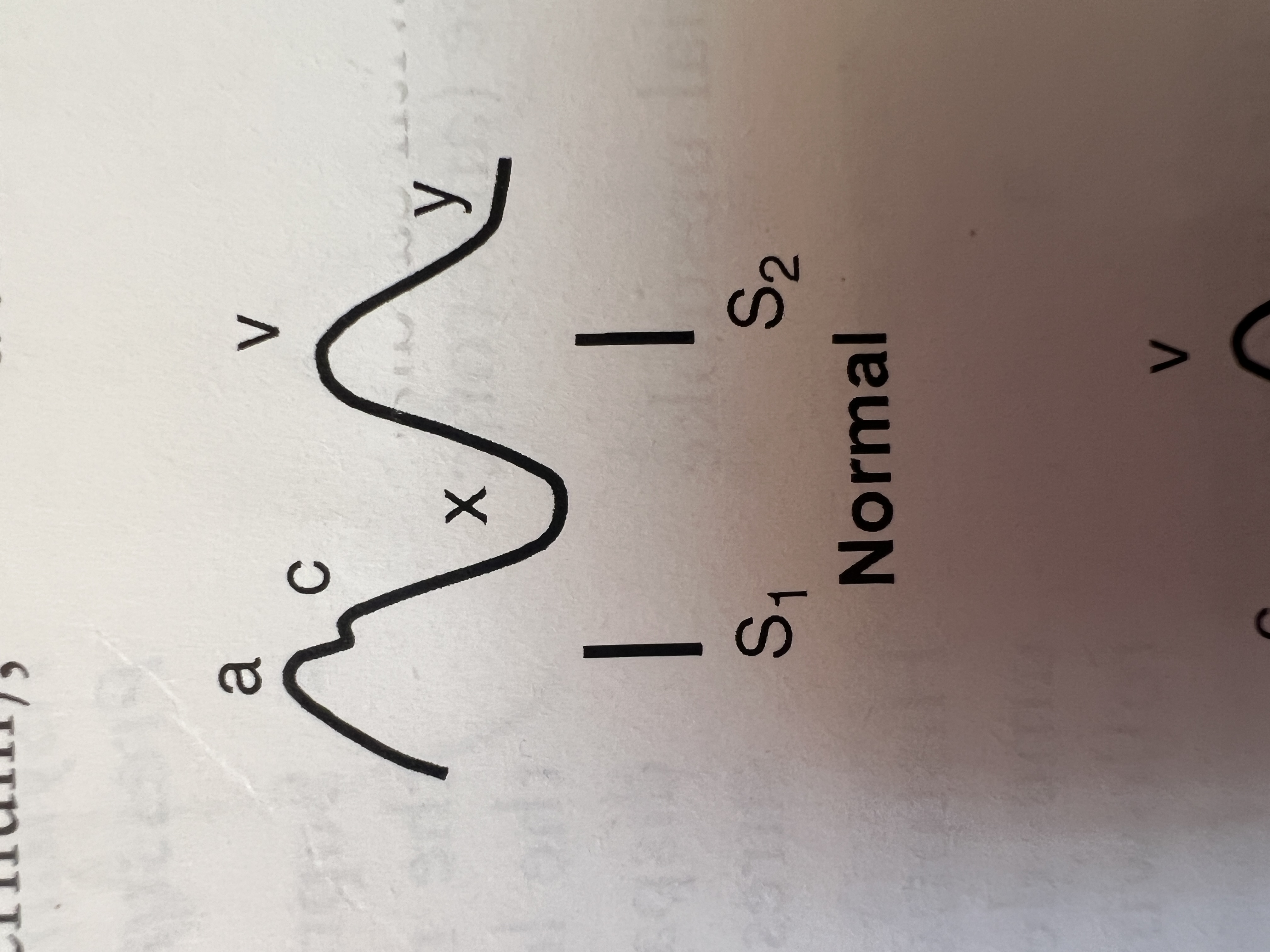
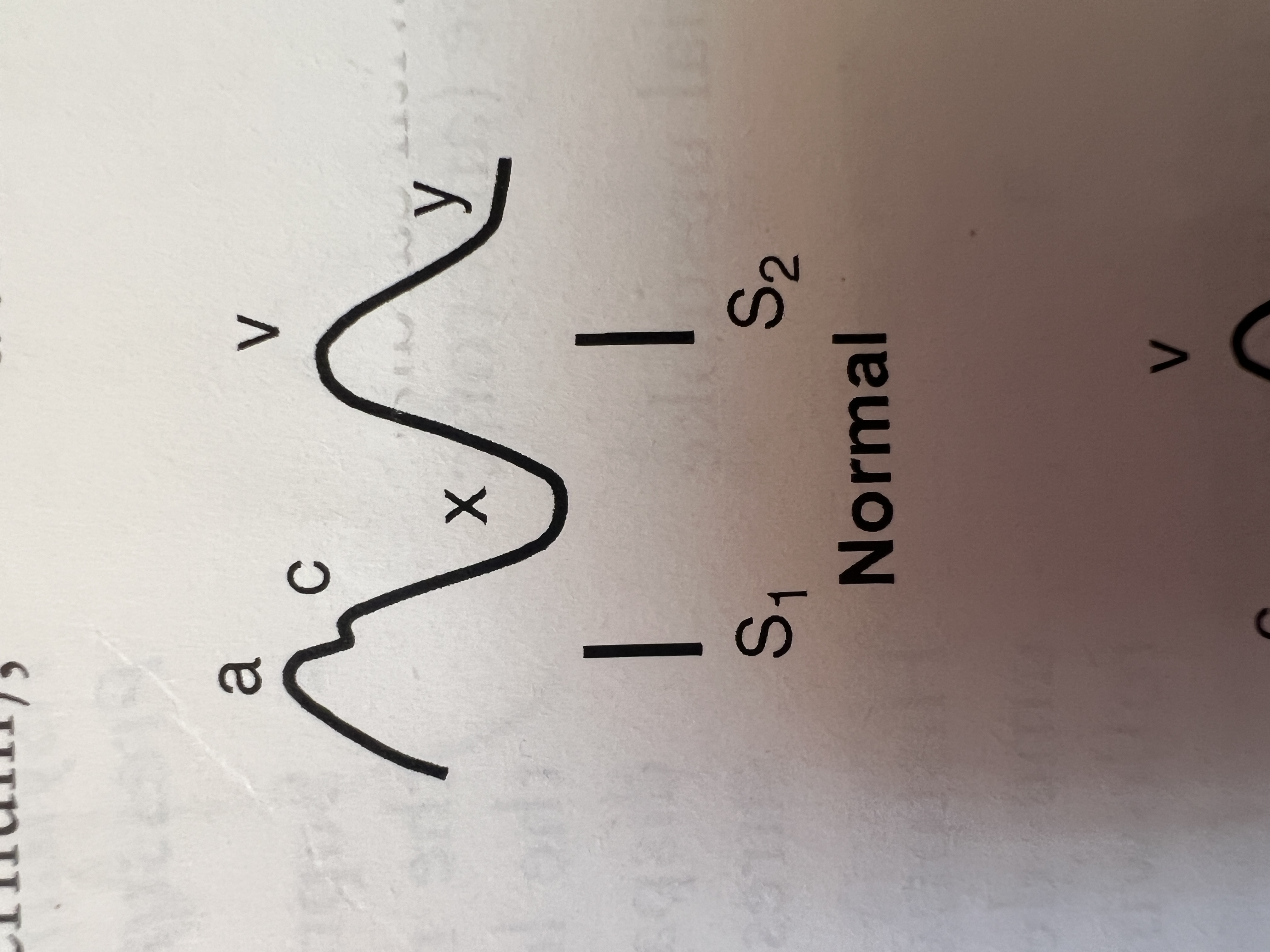
What causes the 'y' descent in right atrial pressure?
Decrease in right atrial pressure with tricuspid valve opening and right ventricular diastolic filling.
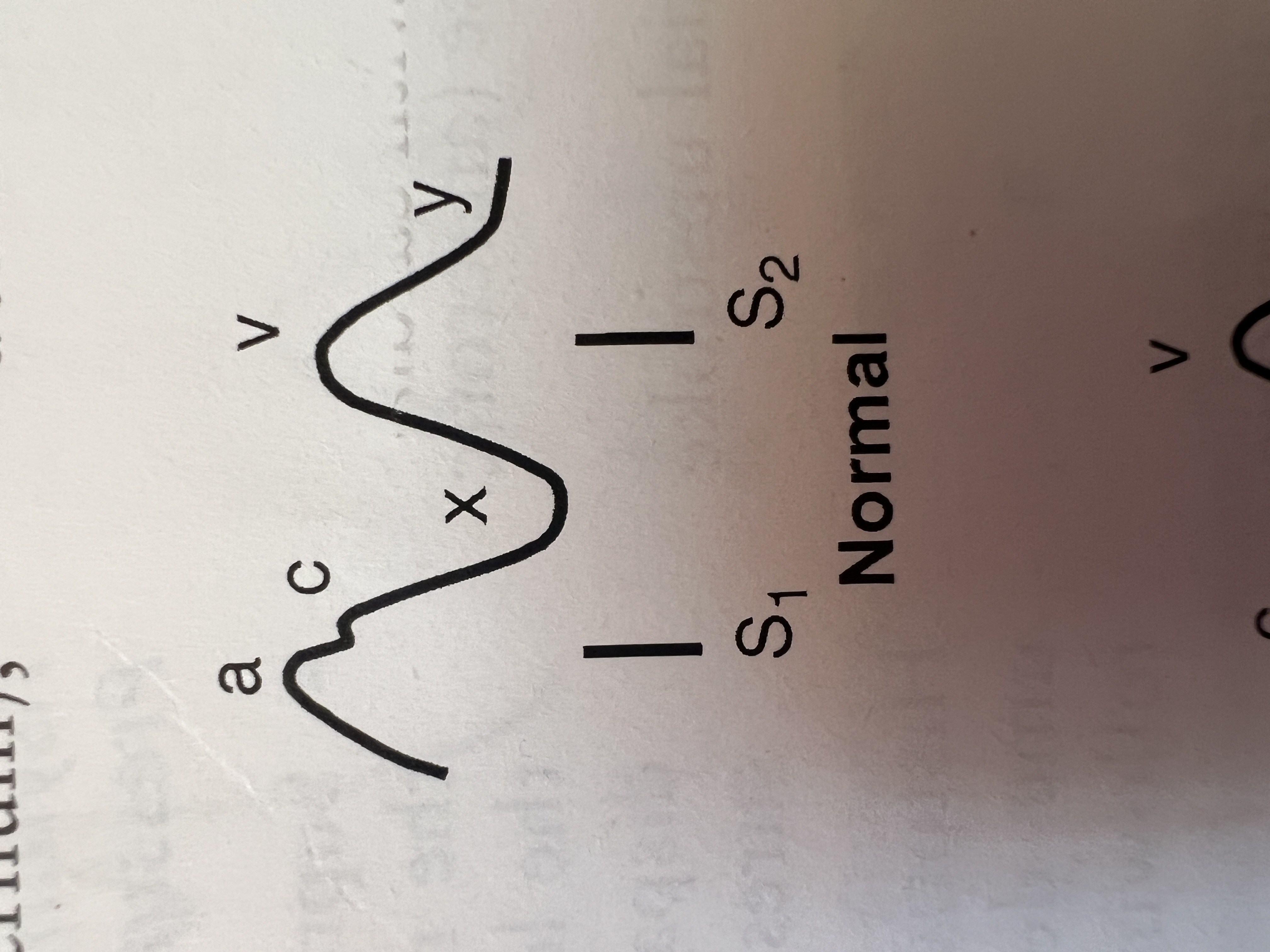
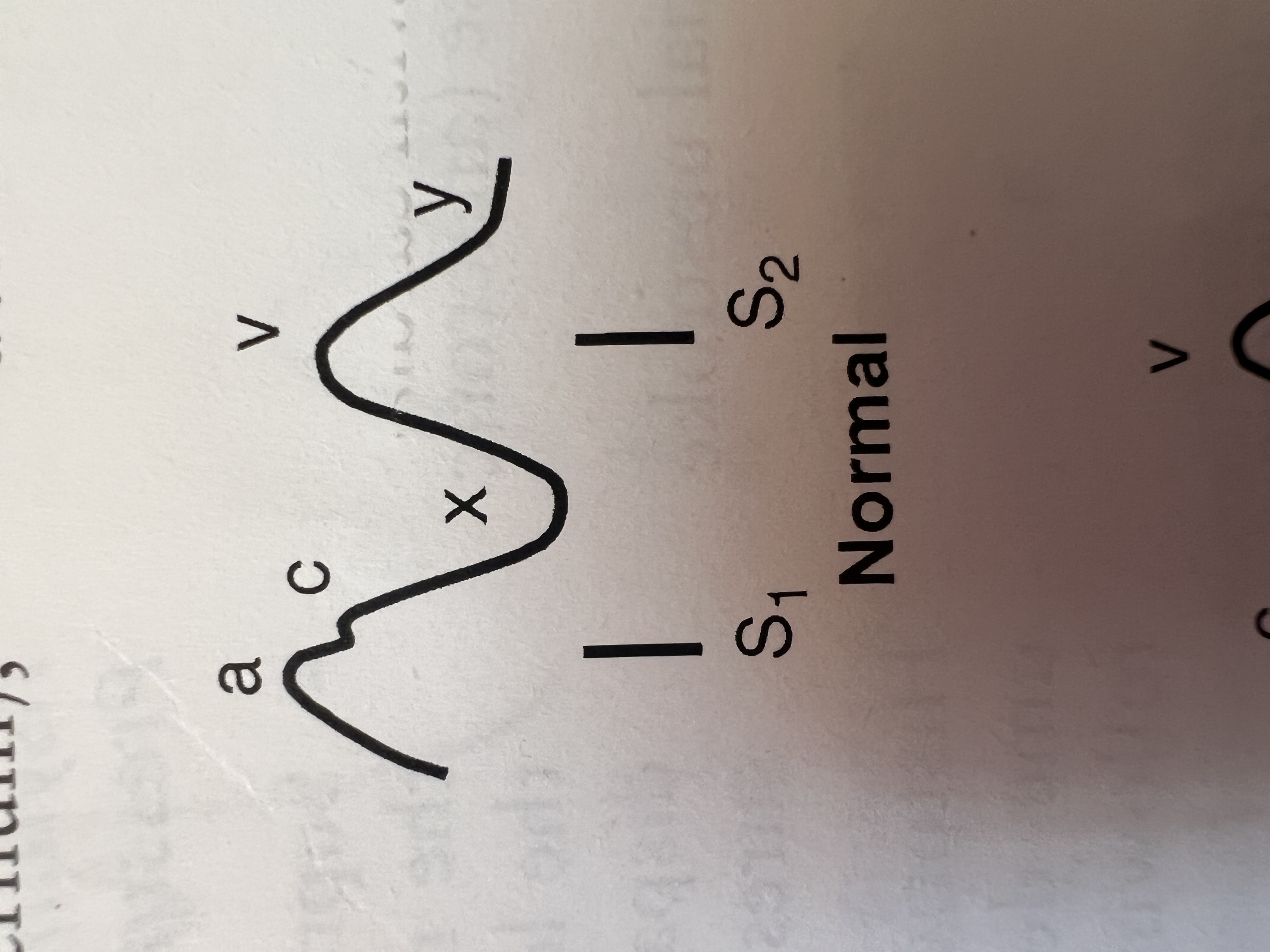
In normal individuals, how many positive and negative waves are typically present in internal jugular pulsations?
Typically, there are two positive waves ('a' and 'v' waves) and two negative waves ('x' and 'y' descents).
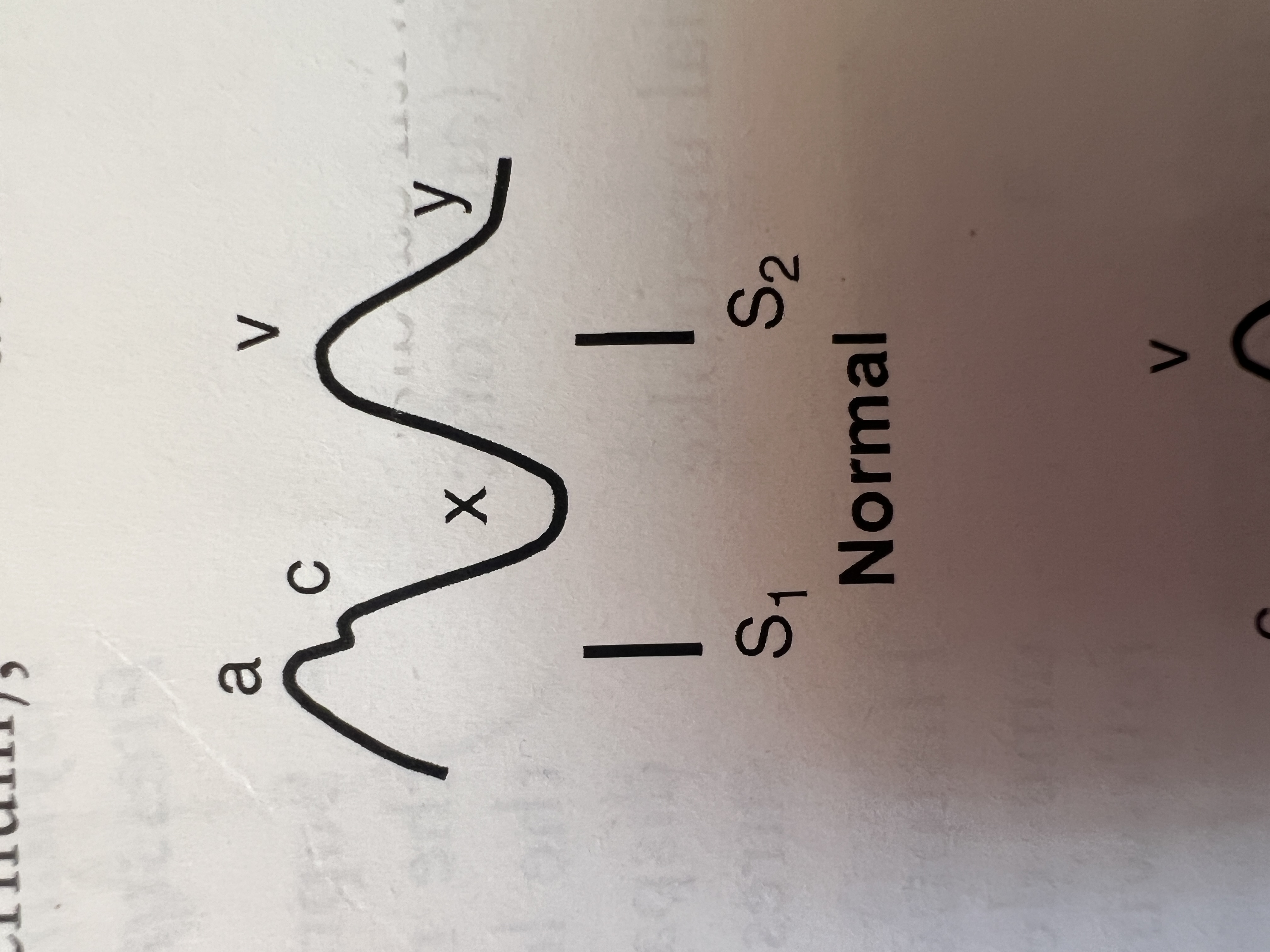

Which wave is lost with atrial fibrillation?
The 'a' wave is lost with atrial fibrillation.
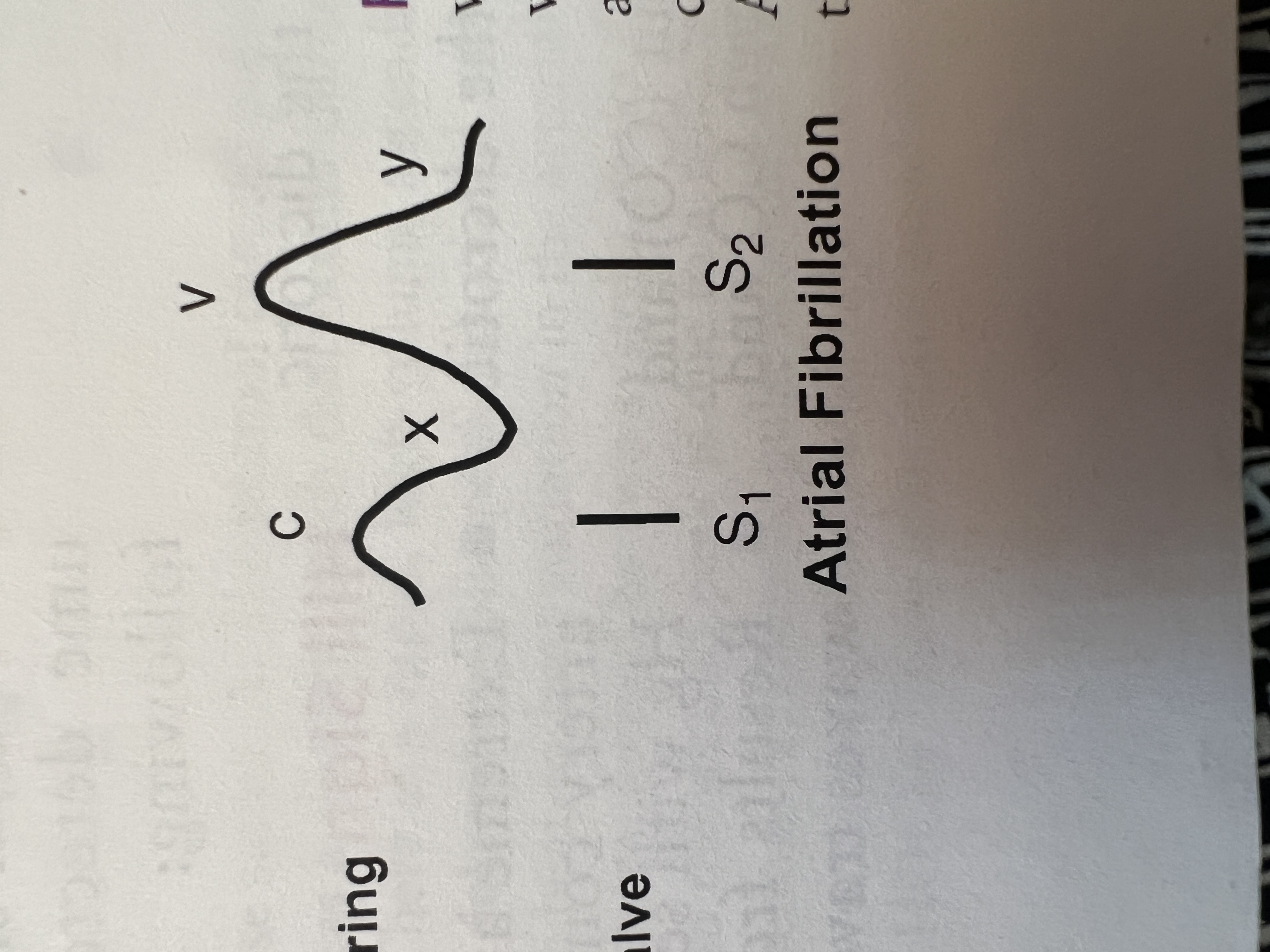
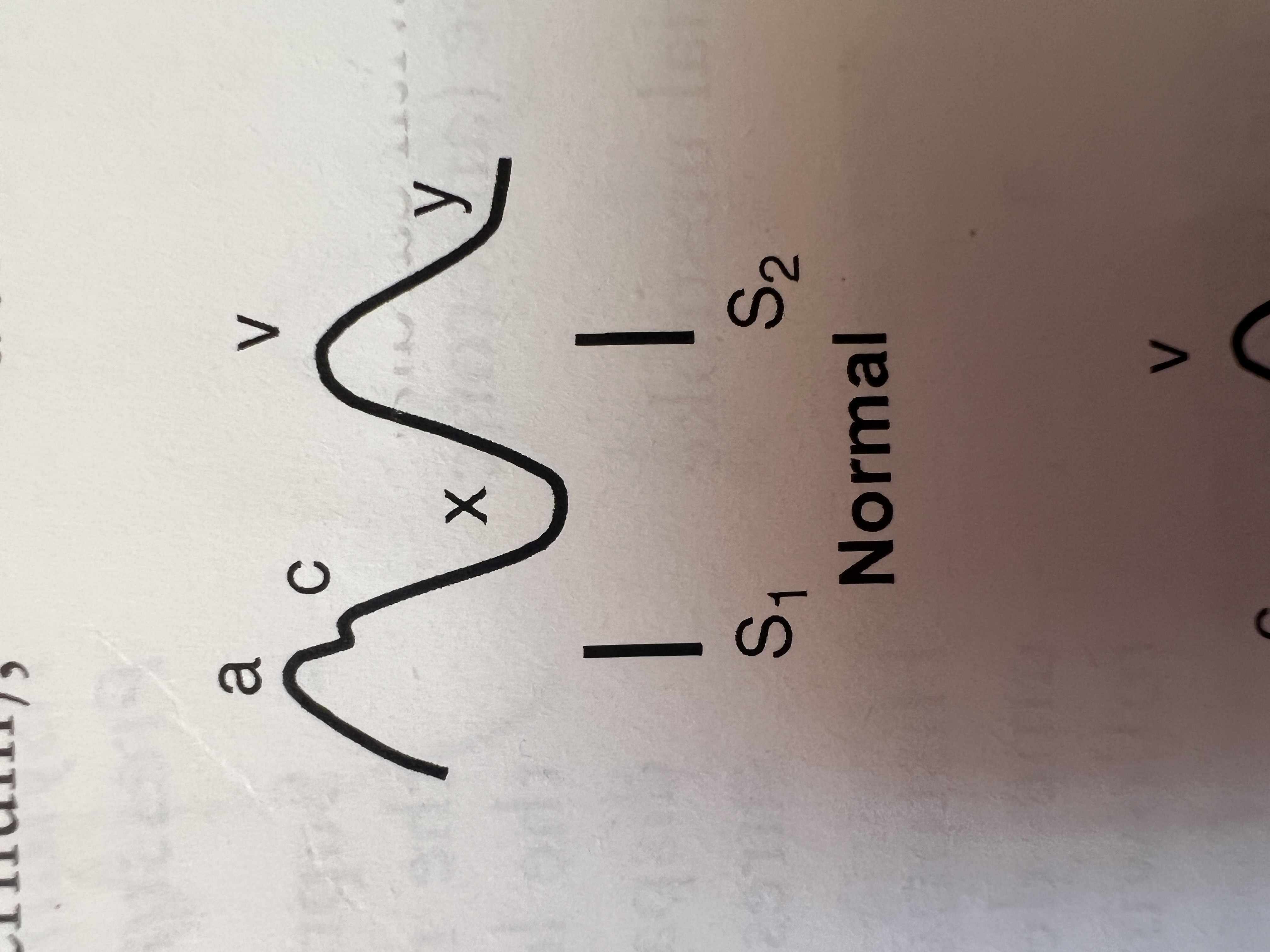
Is the 'c' wave appreciable on physical examination?
The 'c' wave is not appreciable on physical examination.
